#avendata
Text
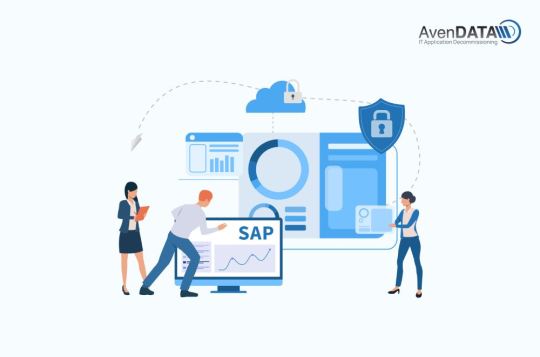
SAP-Systemstilllegung: Optimierung von Abläufen und Schutz von SAP Legacy-Daten
In der heutigen schnelllebigen Geschäftswelt streben Unternehmen ständig danach, ihre Technologielandschaft zu optimieren und Abläufe zu vereinfachen. In diesem Artikel werden wir das Konzept der SAP-Systemstilllegung erkunden und ihre Bedeutung im Bereich des Enterprise Resource Planning (ERP) hervorheben.
Was ist SAP-Systemstilllegung?
Die SAP-Systemstilllegung bezeichnet den geplanten Ruhestand oder die Deaktivierung von SAP-Systemen, die von einer Organisation nicht mehr aktiv genutzt werden. Dieser Prozess umfasst das sorgfältige Archivieren relevanter Daten und die Gewährleistung der Einhaltung von Richtlinien zur Datenretention. Durch die Stilllegung veralteter oder überflüssiger SAP-Systeme können Unternehmen wertvolle Ressourcen freisetzen und ihre IT-Landschaft vereinfachen.
Im Rahmen des Stilllegungsprozesses spielt die Archivierung von SAP-Legacy-Daten eine entscheidende Rolle bei der Erhaltung historischer Informationen und der Sicherstellung der Zugänglichkeit bei Bedarf. Die Archivierung von SAP-Daten beinhaltet die Extrahierung relevanter Daten aus den ausgesonderten SAP-Systemen, deren Umwandlung in ein für die langfristige Speicherung geeignetes Format und deren sichere Aufbewahrung.
#SAP-Systemstilllegung#Systemstilllegung#SAPLegacyDaten#altsystem#altsysteme#legacysysteme#legacysystem#itlegacysystem#carveout#AvenDATA
0 notes
Text
Strategic Due Diligence: Key Steps in Preparing for Mergers and Acquisitions
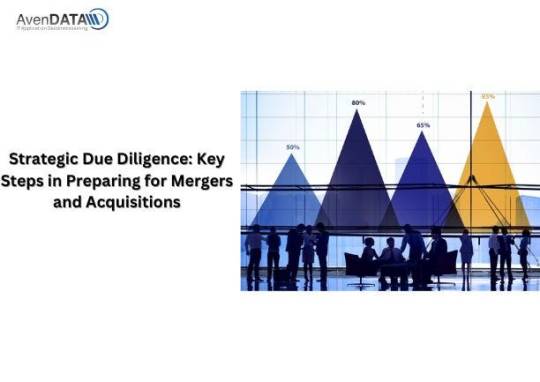
Mergers and acquisitions (M&A) are transformative events that can reshape the trajectory of companies, unlocking new opportunities for growth and expansion. However, the road to a successful M&A deal is fraught with challenges and uncertainties. Strategic due diligence plays a crucial role in mitigating risks, identifying synergies, and ensuring that the deal delivers the intended value to all stakeholders involved. In this blog post, we’ll explore the key steps in strategic due diligence and how they contribute to the success of M&A transactions.
1. Define Objectives and Criteria
Before embarking on an M&A journey, it’s essential for companies to define their objectives and criteria for potential targets. This involves clarifying strategic goals, identifying target markets or industries, and setting specific criteria for evaluating potential acquisitions. By clearly defining objectives and criteria upfront, companies can focus their efforts on opportunities that align with their strategic vision and offer the greatest potential for value creation.
2. Conduct Preliminary Research
Once objectives and criteria are established, companies can begin conducting preliminary research to identify potential acquisition targets. This may involve market analysis, competitor benchmarking, and industry trends analysis to identify opportunities and assess market dynamics. Additionally, companies should leverage their networks and industry contacts to gather intelligence and identify potential targets that may not be publicly known.
3. Perform Financial Analysis
Financial analysis is a critical component of strategic due diligence, helping companies assess the financial health and performance of potential acquisition targets. This involves reviewing financial statements, cash flow projections, and historical performance metrics to evaluate the target’s revenue, profitability, and growth prospects. Financial analysis also helps identify any potential red flags or areas of concern that may impact the valuation or viability of the deal.
4. Assess Operational and Technological Compatibility
In addition to financial analysis, companies should assess the operational and technological compatibility of potential acquisition targets. This involves evaluating factors such as organizational structure, operational processes, and technological infrastructure to determine compatibility with the acquiring company’s systems and processes. Assessing operational and technological compatibility early in the due diligence process can help identify integration challenges and inform post-merger integration planning.
5. Evaluate Legal and Regulatory Compliance
Legal and regulatory compliance is another critical aspect of strategic due diligence. Companies must assess the legal and regulatory landscape in which the target operates and identify any potential risks or liabilities that may arise from non-compliance. This involves reviewing contracts, licenses, permits, and regulatory filings to ensure compliance with applicable laws and regulations. Additionally, companies should assess potential legal risks, such as pending litigation or regulatory investigations, that may impact the deal.
6. Conduct Cultural Assessment
Finally, companies should conduct a cultural assessment to evaluate the compatibility of organizational cultures between the acquiring company and the target. Cultural alignment is essential for successful integration and can significantly impact employee morale, productivity, and retention post-merger. By assessing cultural fit early in the due diligence process, companies can identify potential cultural barriers and develop strategies to address them during the integration phase.
Conclusion
Strategic due diligence is a critical component of the M&A process, enabling companies to assess potential risks and opportunities and make informed decisions about potential acquisitions. By following these key steps in strategic due diligence, companies can minimize risks, identify synergies, and ensure that M&A transactions deliver the intended value to all stakeholders involved.
0 notes
Text
Decommissioning legacy applications is a complex process that requires careful planning and execution. Some of the common challenges faced by organizations include..
Please click Below link to read more:
https://avendata.com/blog/simplifying-it-application-decommissioning
0 notes
Text
Systemstilllegung – So archivieren wir IT-Altsysteme
In der Welt der Informationstechnologie sind Altsysteme ein häufiges Problem. Sie stellen ein Risiko für Unternehmen dar, da sie veraltet sind und potenziell unzureichende Sicherheitsfunktionen bieten. Aus diesem Grund müssen IT-Altsysteme systematisch stillgelegt und archiviert werden, um die Sicherheit und Effizienz des IT-Betriebs zu gewährleisten.
Die IT-Systemstilllegung ist ein wichtiger Prozess, der nicht nur die physische Stilllegung der Hardware umfasst, sondern auch die Entfernung aller Daten aus dem System und deren sichere Archivierung. Eine ordnungsgemäße Stilllegung ist entscheidend, um die Integrität der Daten und die Einhaltung von Vorschriften wie der DSGVO zu gewährleisten.
Bei der Stilllegung von Altsystemen sollten Unternehmen sicherstellen, dass sie die richtigen Schritte unternehmen. Eine gründliche Planung und Durchführung der Stilllegung ist unerlässlich, um mögliche Störungen im IT-Betrieb zu minimieren. Die Stilllegung sollte in Zusammenarbeit mit IT-Spezialisten und der Geschäftsleitung erfolgen, um sicherzustellen, dass alle Anforderungen erfüllt sind.
Es ist auch wichtig, dass alle Daten aus den Altsystemen sicher archiviert werden. Unternehmen müssen sicherstellen, dass alle Daten gemäß den geltenden Vorschriften und Best Practices archiviert werden. Daten können auf verschiedenen Arten archiviert werden, darunter die Übertragung auf ein neues System oder die Speicherung auf externen Festplatten oder in der Cloud.
Ein weiterer wichtiger Aspekt bei der Stilllegung von Altsystemen ist die Schulung von Mitarbeitern. Mitarbeiter müssen über die Stilllegung informiert werden und über alternative Systeme, auf die sie zugreifen können. Es ist wichtig sicherzustellen, dass alle Mitarbeiter über die Stilllegung informiert werden, um mögliche Ausfälle zu vermeiden.
Insgesamt ist die Stilllegung von Altsystemen ein wichtiger Prozess, der sorgfältig geplant und durchgeführt werden muss. Unternehmen müssen sicherstellen, dass sie die richtigen Schritte unternehmen, um Datenintegrität und Sicherheit zu gewährleisten. Durch eine ordnungsgemäße Stilllegung und Archivierung können Unternehmen potenzielle Risiken minimieren und ihre IT-Systeme effektiv verwalten.
0 notes
Text
What ChatGPT - OpenAI Thinks About Legacy Systems: AvenData Inquiry
Legacy systems refer to IT systems that have been utilized for many years, even decades, despite being technologically outdated. Such systems could include both hardware and software components that have not been upgraded or further developed for a considerable period of time.
The main issue with legacy systems is that they usually fail to meet modern IT system standards and requirements. As an instance, they might have security weaknesses that are no longer adequate to counteract current threats. These security gaps could be exploited by hackers to obtain confidential information or even disable the system.
0 notes
Text
Carve Out | IT Carve-out | Data Carve-out
Are you facing the challenge of carve out? Then AvenData have the solution for you. Realize the data carve-out with our ViewBox archiving system.
We are specialized in Carve Out & archiving legacy systems within applications decommissioning. In doing so, we have successfully implemented with hundreds of companies from a wide range of industries worldwide.
For More Info Visit Us :https://avendata.com/
1 note
·
View note
Text
The importance of legacy systems is steadily increasing

Introduction
Legacy systems are becoming increasingly important. For over 15 years, AvenDATA has specialized in archiving legacy systems and supporting their seamless migration. During this time, we have noticed changes in how legacy systems are being handled, providing insights into how the use of legacy systems has evolved over the years.
In the past, it was common for companies to use their old systems intensively for only about two years after migration. However, this practice has changed dramatically in recent years. The vast amount of historical data they contain has led companies to utilize these legacy systems in the archive for longer periods than ever before.
Our experience shows that even after five years, access is still made to more than 40 percent of all archived systems at least once a month. Our long-standing expertise as a specialized archiving company has demonstrated that more and more of our customers are incorporating archiving into their project planning from the outset. Just a few years ago, archiving legacy systems was often considered an afterthought. However, this perception has changed significantly, and we are seeing an increasing number of inquiries from around the world on this topic.
#carve-out#it application decommissioning#mergers and acquisitions#sap system#system decommissioning#insolvency#liquidation#legacy system
0 notes
Text
Save Time with Viewbox
Generally, the client will have to go through the hectic process of opening different views and downloading the documents, probably one by one. This process will take a large amount of time.
With AvenDATA’s ViewBox, you are enabled with an easier way to download not only the invoice documents but also the Excel sheets containing all the records. These records are related to the required View and are available at a single click. This saves valuable time.
0 notes
Text
Allow us to archive your legacy strategies and help you with your carve-outs.
You've arrived at the ideal location if you're looking for a business that can cut out corporate codes, clients, plants, or something similar. Carve Out is sort of the complete archiving's smaller brother. This indicates that, in terms of method and technical processes, the carve out is extremely comparable to comprehensive archiving. In this regard, it was not unexpected that clients approached us with the request to additionally do equivalent carve outs after a few instances of archiving and shutdown of legacy systems. A highly thorough understanding of database architecture and database models is necessary for carving out new systems from current ones like SAP, Oracle, and Navision. A technical difficulty that AvenDATA has been dealing with for a long time is a carve out.
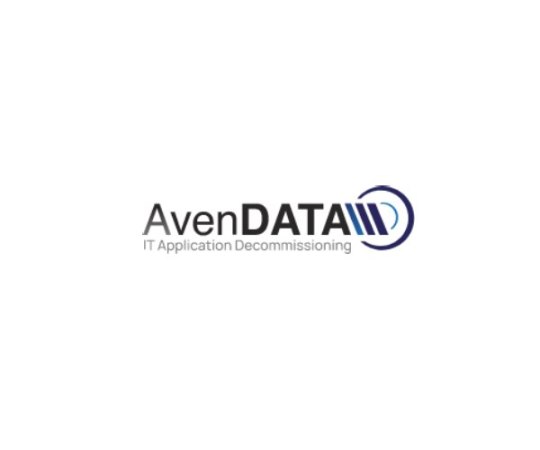
1 note
·
View note
Link
Softwareentwickler gesucht? Insbesondere technologienahe und wachstumsstarke Startups brauchen kompetente Softwareentwickler, die auf dem Arbeitsmarkt aber kaum verfügbar sind. Über AvenDATA Technologies ist es möglich, erfahrene Softwareentwickler flexibel einzusetzen. Gute Softwareentwickler zu finden, ist keine leichte Aufgabe. Vor allem für junge Unternehmen, die weder über große Budgets noch eigene HR-Abteilungen verfügen, wird es immer schwerer Softwareentwickler zu bezahlbaren Konditionen zu rekrutieren. Aber gerade für technologienahe und wachsende Startups sind exzellente Softwareentwickler überlebenswichtig. Denn lange Rekrutierungsprozesse sind häufig nicht darstellbar, da der Markt sich schnell weiterentwickelt und die Konkurrenz ansonsten davonzieht. Mit AvenDATA Technologies gibt es jetzt eine flexible und kostengünstige Lösung – Softwareentwicklung-as-a-Service. „Der Ansatz ist einfach: Wir übernehmen für unsere Kunden das Coden und Testen von Software zu attraktiven Konditionen“, sagt Fabian Kozam, Co-Founder und Geschäftsführer von AvenDATA Technologies. „Die knappen eigenen Ressourcen unserer Kunden können sich so auf die optimale Konzeptionierung der Software konzentrieren.“ AvenDATA Technologies ist ein Berliner Unternehmen für Softwareentwicklung und verfügt über ein eigenes Entwicklungszentrum in Mumbai mit über 100 Entwicklern und Ingenieuren für alle gängigen Programmiersprachen und Frameworks (.NET, Java, JavaScript, Python, Ruby on Rails, PHP etc.). Die Konditionen beginnen bereits bei ca. 1.700 EUR/Monat für eine Entwicklerkapazität. Erfahrene Entwickler liegen bei ca. 2.000-2.500 EUR/Monat. Die Steuerung erfolgt dabei in der Regel über Projektleiter in Berlin – das heißt der direkte Ansprechpartner ist in Deutschland und steht auch kurzfristig persönlich zur Verfügung. Über AvenDATA Technologies erhält der Kunde also ein „best of both worlds“: Preiswerte offshore Entwicklerkapazitäten bei jederzeitiger Erreichbarkeit und einfacher Kommunikation durch Firmensitz und Projektmanagement in Deutschland. Als Ausgründung des Berliner Software-Unternehmens AvenDATA GmbH, das seit 2003 Softwarelösungen für weltweit mehr als 3.500 Kunden entwickelt hat, ist AvenDATA Technologies in fünf Bereichen tätig: Erweiterungen von bestehenden Teams Neuentwicklungen von Software und MVPs Optimierung bestehender Software/Bugfixing IT-Support/-Wartung IT-Beratung AvenDATA Technologies zählt zu seinen Kunden sowohl etablierte Corporates als auch junge Startups. Mit seinem Innovation Lab bietet das Unternehmen speziell Kunden aus dem Startup-Umfeld ein “Experimentierstudio” – hier können Ideen und Ansätze im Softwarebereich ausprobiert werden, die aus Kostengründen sonst nicht ohne Weiteres umsetzbar sind. Fazit: Fünf gute Gründe für AvenDATA Technologies: Großer Talentpool an Entwicklern für alle gängigen Technologien Attraktive Konditionen, Entwicklungskapazitäten bereits ab 1.700 EUR pro Monat Einfache Kommunikation und ständige Erreichbarkeit Flexibilität und Skalierbarkeit Sicherheit durch langjährige Erfahrung in der Softwareentwicklung Lernen Sie uns in einem unverbindlichen Erstgespräch kennen oder lassen Sie uns für eine Aufwandsschätzung eine grobe Projektbeschreibung zukommen. Projekte und „Testballons“ lassen sich in der Regel sehr kurzfristig starten. „Let’s develop the future together“ https://ift.tt/2HlkilY
0 notes
Text

Eine Anleitung um Legacy-Anwendungen außer Betrieb zu nehmen
In diesem Artikel werden wir uns eingehend damit befassen, wie man Legacy-Anwendungen außer Betrieb nimmt. Legacy-Anwendungen können ein großes Hindernis für die Geschäftskontinuität und die digitale Transformation eines Unternehmens sein. Sie sind veraltete Softwareanwendungen, die oft nicht mehr den modernen technischen Standards entsprechen und die Effizienz und Produktivität beeinträchtigen können. Daher ist es von entscheidender Bedeutung, dass Unternehmen einen klaren Plan haben, um solche Legacy-Anwendungen sicher und effektiv außer Betrieb zu nehmen.
Warum Systeme zu Legacy-Anwendungen werden?
Bevor wir uns darauf konzentrieren, wie Legacy-Anwendungen außer Betrieb genommen werden, ist es wichtig, die Gründe dafür zu verstehen. Es gibt mehrere Faktoren, die dazu führen, dass Unternehmen ihre veralteten Anwendungen ersetzen oder entfernen möchten:
#LegacyAnwendungen#altsystem#Legacy-Anwendungen#altsysteme#legacysysteme#legacysystem#itlegacysystem#carveout#AvenDATA
0 notes
Text
Navigating Cultural Integration in Company Mergers and Acquisitions
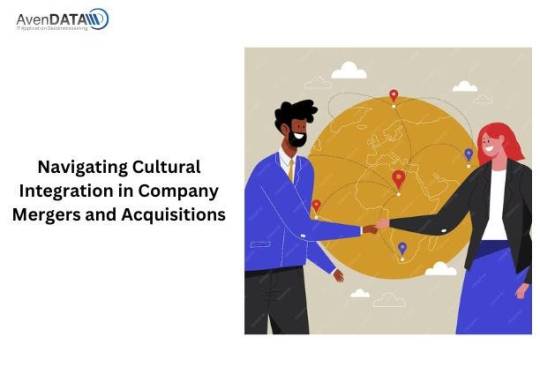
Mergers and acquisitions (M&A) are complex processes that involve more than just financial transactions. One critical aspect that often determines the success or failure of an M&A deal is cultural integration. When two companies come together, they bring with them unique cultures, values, and ways of working. Navigating this cultural integration requires careful planning, clear communication, and a deep understanding of the human elements involved.
Understanding Cultural Differences
Cultural differences can arise from various factors, including organizational structure, communication styles, leadership approaches, and even national or regional backgrounds. Before embarking on an M&A journey, it’s essential for both parties to conduct a thorough cultural assessment to identify potential areas of alignment and divergence. This assessment should go beyond surface-level observations and delve into the underlying values, norms, and behaviors that shape each organization’s culture.
Establishing Common Ground
Once cultural differences have been identified, the next step is to establish common ground and shared goals. This requires open dialogue and active engagement from both sides. Leaders should facilitate conversations that allow employees to express their concerns, share their perspectives, and find commonalities. By focusing on shared values and objectives, organizations can create a sense of unity and purpose that transcends cultural boundaries.
Clear Communication and Transparency
Effective communication is key to successful cultural integration. Leaders must be transparent about the M&A process, including its objectives, timeline, and potential impact on employees. They should provide regular updates and opportunities for feedback to ensure that employees feel informed and involved throughout the transition. Additionally, clear communication helps dispel rumors and address any misconceptions or fears that may arise during the integration process.
Fostering Collaboration and Inclusion
Cultural integration is not just about assimilating one company into another; it’s about creating a new, unified culture that values diversity and inclusion. Organizations should actively promote collaboration across teams and departments, encourage knowledge sharing, and celebrate the contributions of employees from all backgrounds. By fostering a culture of inclusivity, organizations can harness the collective talents and perspectives of their workforce to drive innovation and growth.
Respecting and Preserving Heritage
While cultural integration is essential for alignment and synergy, it’s also important to respect and preserve the heritage of each organization involved in the M&A. This means acknowledging and honoring the unique history, traditions, and achievements of both companies. Leaders should strive to create an environment where employees feel proud of their heritage and are encouraged to embrace elements of their cultural identity within the new organizational context.
Conclusion
Navigating cultural integration in company mergers and acquisitions is a complex but critical endeavor. By understanding cultural differences, establishing common ground, prioritizing clear communication and transparency, fostering collaboration and inclusion, and respecting heritage, organizations can effectively navigate the challenges of cultural integration and lay the foundation for long-term success in their M&A endeavors.
0 notes
Text
Acquisitions, on the other hand, involve one company buying another company. It’s like when you purchase something from a store, except in this case, a company purchases another company. The acquiring company becomes the new owner of the acquired company.
Click Below link to read more:
https://avendata.com/blog/handling-of-it-mergers-and-acquisitions-harmonization-of-legacy-systems-and-carve-outs
0 notes
Text
A complete guide to Application Retirement
Information technology (IT) applications are now being retired and replaced by newer ones that are more efficient, user-friendly, and cost effective. This is a good sign of the growing service organization that the business has been striving to achieve. Do you have legacy systems that are not used productively anymore, but you can not shut them down because you still need to retain the data? Here comes Application retirement term. Continue reading...
0 notes
Text
A Complete Guide to Application Retirement
You can't shut down your legacy systems because you still need to retain the data? We offer you legally compliant services for archiving and application retirement.
AvenDATA is one of the leading providers in the field of legacy system archiving and legacy system decommissioning. Our vision is to revolutionize the future of system decommissioning through our ViewBox archive solution.
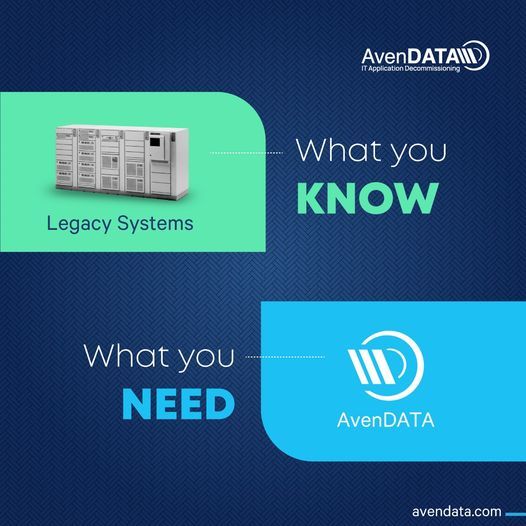
#IT Application Decommissioning#Application retirement#System decommissioning#System Shutdown#Applications Decommissioning#legacy application modernization
0 notes